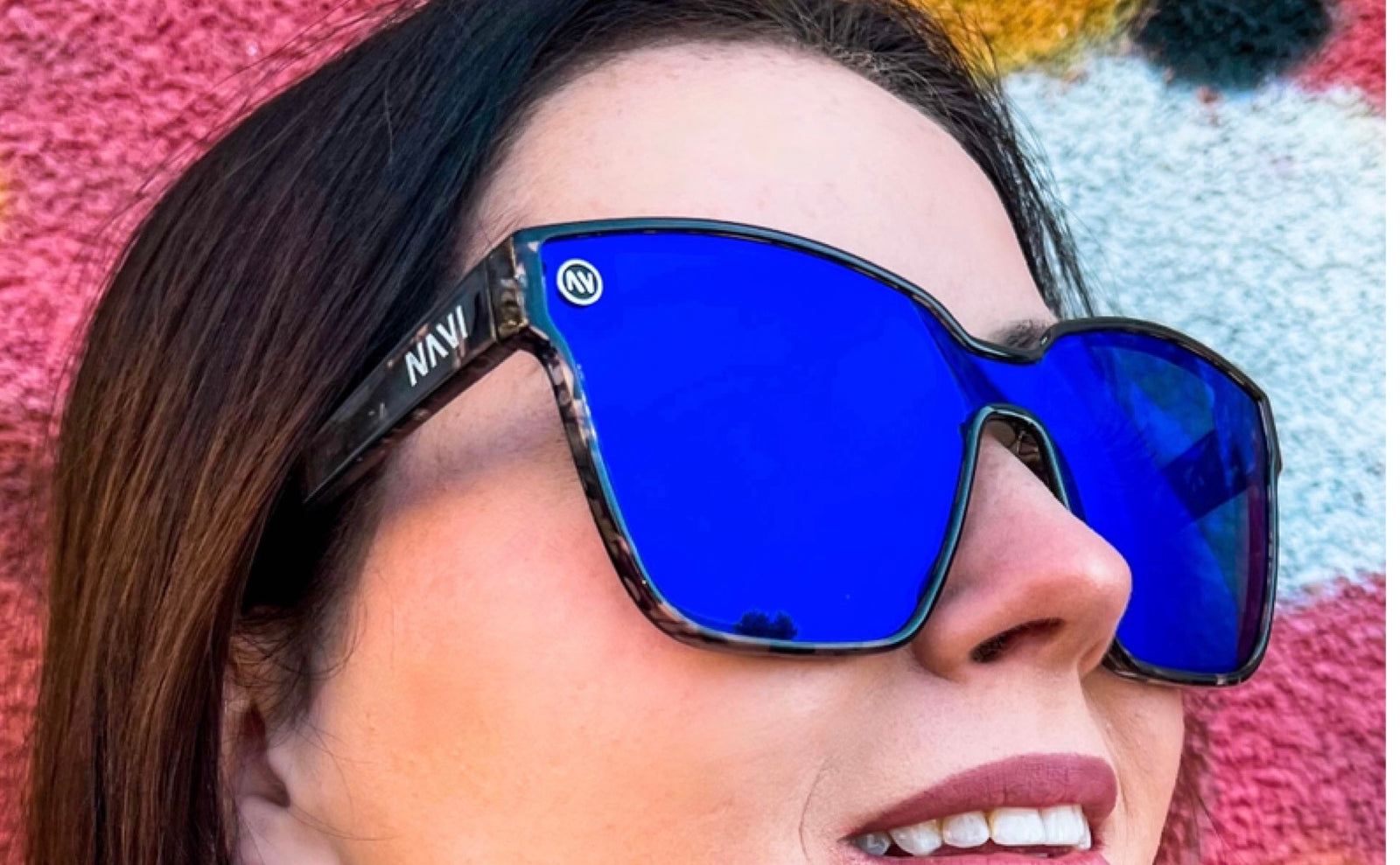Are you an avid cyclist looking to upgrade your cycling gear? Or maybe you're a beginner cyclist who's just starting to explore the world of cycling? Regardless of your experience level, one piece of equipment that should not be overlooked is a good pair of sunglasses. Not only do they protect your eyes from harmful UV rays, but they also improve your visibility on the road. In this article, we'll discuss the important factors to consider when choosing sunglasses for biking.
Table of Contents
- Why Wear Sunglasses While Cycling?
- Fit and Comfort
- Frame Material
- Lens Material
- Lens Color
- Lens Shape
- Polarized or Non-Polarized
- Photochromic Lenses
- Ventilation
- Prescription Sunglasses
- Price Range
- Brand Reputation
- Maintenance and Care
- Additional Accessories
- Conclusion
Why Wear Sunglasses While Cycling?
Before we delve into the specifics of choosing sunglasses for biking, let's first discuss why it's important to wear sunglasses while cycling. The most obvious reason is to protect your eyes from the harmful UV rays of the sun. Prolonged exposure to UV rays can cause a number of eye problems such as cataracts, macular degeneration, and even skin cancer around the eyelids.
In addition, sunglasses can improve your visibility on the road by reducing glare and enhancing contrast. This is especially important when cycling in bright sunlight or in low-light conditions.
Now that we've established the importance of wearing sunglasses while cycling, let's dive into the specifics of choosing the right pair for you.
Fit and Comfort
One of the most important factors to consider when choosing sunglasses for biking is the fit and comfort. Sunglasses that are too tight or too loose can cause discomfort and distraction while cycling. Look for sunglasses that fit snugly on your face without pressing too hard on any particular area.
Additionally, consider the weight of the sunglasses. You don't want sunglasses that are too heavy and will weigh down on your nose or ears. Choose a lightweight pair that won't cause any discomfort during long rides.
Frame Material
The frame material is another important factor to consider when choosing sunglasses for biking. The most common materials for frames are plastic and metal. Plastic frames are lightweight and durable, but they may not be as flexible as metal frames. Metal frames, on the other hand, are more flexible and durable, but they can be heavier than plastic frames.
Consider the type of biking you'll be doing and choose a frame material that will withstand the conditions you'll be facing.
Lens Material
The lens material is another crucial factor to consider when choosing sunglasses for biking. The most common materials for lenses are plastic and glass. Plastic lenses are lightweight and shatter-resistant, but they can scratch easily. Glass lenses, on the other hand, are heavier than plastic lenses, but they are more scratch-resistant and provide better optical clarity.
Lens Color
The color of the lens is another important consideration. Different lens colors provide different benefits for cycling. For example, yellow lenses enhance contrast in low-light conditions, while red lenses provide excellent visibility in bright sunlight.
Consider the lighting conditions you'll be cycling in and choose a lens color that will enhance your visibility and reduce glare.
Lens Shape
The shape of the lens is also important to consider. Wraparound lenses provide better coverage and protection from the sun and wind, but they can be heavier and more cumbersome than other lens shapes. Rectangular lenses are more lightweight and offer a more classic look.
Polarized or Non-Polarized
Polarizedlenses are designed to reduce glare and improve visibility in bright sunlight. They are an excellent choice for cyclists who frequently ride in sunny conditions. However, polarized lenses can also make it difficult to see certain types of LCD screens, such as those found on bike computers and GPS devices.
Non-polarized lenses, on the other hand, do not reduce glare as effectively as polarized lenses, but they do not interfere with the visibility of LCD screens. Consider the type of cycling you'll be doing and choose a lens that works best for your specific needs.
Photochromic Lenses
Photochromic lenses are lenses that darken or lighten based on the amount of light they are exposed to. They are an excellent choice for cyclists who frequently ride in varying lighting conditions. However, they can be more expensive than non-photochromic lenses.
Ventilation
When cycling, it's important to have good ventilation around the eyes to prevent fogging. Look for sunglasses that have good ventilation around the lenses or that have anti-fog coatings.
Prescription Sunglasses
If you wear prescription glasses, consider getting prescription sunglasses for cycling. This will ensure that you have clear vision while also protecting your eyes from UV rays.
Price Range
Sunglasses for cycling can range in price from less than $20 to over $200. Consider your budget and look for a pair that fits within your price range. Keep in mind that more expensive sunglasses may have better features, such as polarized or photochromic lenses, but they may not be necessary for all cyclists.
Brand Reputation
Consider the reputation of the brand when choosing sunglasses for cycling. Look for brands that are known for producing high-quality, durable sunglasses that are designed specifically for cyclists.
Maintenance and Care
Proper maintenance and care of your sunglasses will help them last longer and perform better. Look for sunglasses that are easy to clean and that come with a protective case to prevent scratches and damage when not in use.
Additional Accessories
Consider any additional accessories that may be useful when cycling, such as a strap to keep the sunglasses in place, or interchangeable lenses for different lighting conditions.
Conclusion
Choosing the right sunglasses for cycling is an important decision that can affect both your comfort and your safety on the road. Consider the fit, frame and lens materials, lens color, shape, polarization, photochromic capabilities, ventilation, prescription needs, price range, brand reputation, maintenance and care, and any additional accessories when making your decision. With the right pair of sunglasses, you can enjoy your cycling adventures with clear vision and protected eyes.
FAQs
- Are polarized lenses better for cycling?
- Polarized lenses are great for reducing glare and improving visibility in bright sunlight, but they can also interfere with the visibility of certain types of LCD screens. Consider your specific needs and preferences when choosing between polarized and non-polarized lenses.
- What's the best lens color for cycling?
- The best lens color for cycling depends on the lighting conditions you'll be cycling in. Yellow lenses enhance contrast in low-light conditions, while red lenses provide excellent visibility in bright sunlight.
- Can I wear my regular glasses when cycling?
- Regular glasses may not provide adequate protection from UV rays and may not be as durable as sunglasses designed specifically for cycling. Consider getting prescription sunglasses for cycling or investing in a good pair of non-prescription sunglasses.
- How do I clean my cycling sunglasses?
- Use a microfiber cloth or lens cleaning solution to clean your cycling sunglasses. Avoid using paper towels or other rough materials that can scratch the lenses.
- Do I need to spend a lot of money on cycling sunglasses?
- The price of cycling sunglasses can vary widely depending on the features and brand. While more expensive sunglasses may have better features, such as polarized or photochromic lenses, they may not be necessary for all cyclists. Consider your budget and look for a pair that fits within your price range, but also make sure to prioritize features that are important to you, such as UV protection or good ventilation.




